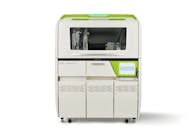Researchers have discovered a novel, non-invasive way to measure blood flow to the brains of newborn children at the bedside – a method that has the potential to enhance diagnosis and treatment across medicine, a Michigan Medicine study suggests.
When a fetus develops, the baby’s lungs are filled with fluid, and oxygen comes directly from the placenta. This oxygenated blood bypasses the lungs to reach the rest of the body through a vessel called the ductus arteriosus.
After birth, babies use their lungs to breathe, and the ductus arteriosus typically closes within several days. But for nearly 65% of pre-term infants, the vessel fails to close. This condition, called patent ductus arteriosus, or PDA, shifts blood flow into an abnormal path which can strain the heart, congest the lungs and steal blood and oxygen from the newborn baby’s brain and other organs.
To address this problem, a team of researchers at Michigan Medicine developed a real-time ultrasound color flow technique that relies on 3D sampling to measure blood flow. They tested the method on 10 healthy, full-term babies, obtaining total brain blood flow measurements that closely match those using more invasive or technically demanding techniques. The results are published in Ultrasound in Medicine and Biology.





